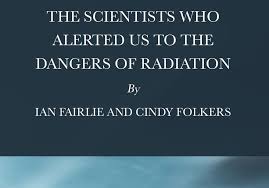Wildfire danger s are increasing, due to climate change
How climate change is increasing the risk of wildfires, The Conversation, Senior Lecturer in GIS and Ecology, Anglia Ruskin University,
The army has been called in to help firefighters deal with a huge wildfire on Saddleworth Moor, Greater Manchester, where residents have been forced to evacuate. Wildfires are also blazing across Northern Californiawhile the issue of bushfires in Australia calls for constant vigilance from the emergency services there. These fires are becoming more common and one of the reasons for this is climate change.
Warmer temperatures in the summer and associated drier conditions desiccate plant materials and create more vegetation litter, providing more fuel for these fires. Several studies have linked the increase of wildfires with climate change in various parts of the world, such as North America and Southern Europe.
For example, a study in California from 2004 found that the warmer and windier weather (brought about by an atmosphere with higher levels of CO2) produced fires that burned more intensely and spread faster in most locations. Despite enhanced firefighting efforts, the number of escaped fires (those exceeding initial containment limits) increased by 51% in the south San Francisco Bay area, 125% in the Sierra Nevada.
It has also been demonstrated that increases in rainfall during winter and spring – which are also known consequences of climate change – provide more favourable conditions for plant growth and therefore more potential fuel for the fires later in the summer.
Even though climate change increases the vulnerability of dry environments to wildfires, a source of ignition is still required. In the UK, it can be natural (such as bolts of lightning) or caused by man either deliberately or accidentally. Various studies have shown that the number of recreational visits to “risky” sites, such as the English Peak District, increase the occurrence of wildfire.
Despite its destructive power, fire is an important ecological process that can benefit several endangered species by maintaining their habitat. It is an important tool in the management and preservation of heathlands and moorlands in the UK when used appropriately and in a controlled way.
But climate change and human activities increase the vulnerability of those habitats to uncontrolled wildfires and higher population densities near these areas will potentially put more people and houses at risk. In addition to the global battle against climate change, appropriate management procedures are necessary to maintain those habitats and ensure the risks of uncontrolled fires are minimised and the potential spread of them reduced. https://theconversation.com/how-climate-change-is-increasing-the-risk-of-wildfires-99056
No comments yet.
-
Archives
- May 2024 (203)
- April 2024 (366)
- March 2024 (335)
- February 2024 (345)
- January 2024 (375)
- December 2023 (333)
- November 2023 (342)
- October 2023 (366)
- September 2023 (353)
- August 2023 (356)
- July 2023 (362)
- June 2023 (324)
-
Categories
- 1
- 1 NUCLEAR ISSUES
- business and costs
- climate change
- culture and arts
- ENERGY
- environment
- health
- history
- indigenous issues
- Legal
- marketing of nuclear
- media
- opposition to nuclear
- PERSONAL STORIES
- politics
- politics international
- Religion and ethics
- safety
- secrets,lies and civil liberties
- spinbuster
- technology
- Uranium
- wastes
- weapons and war
- Women
- 2 WORLD
- ACTION
- AFRICA
- Atrocities
- AUSTRALIA
- Christina's notes
- Christina's themes
- culture and arts
- Fuk 2022
- Fuk 2023
- Fukushima 2017
- Fukushima 2018
- fukushima 2019
- Fukushima 2020
- Fukushima 2021
- general
- global warming
- Humour (God we need it)
- Nuclear
- RARE EARTHS
- Reference
- resources – print
- Resources -audiovicual
- World
- World Nuclear
- YouTube
-
RSS
Entries RSS
Comments RSS



Leave a comment